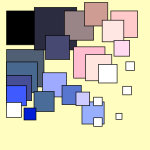103 papers:
 DATE-2015-MirkhaniMCA #design #estimation #fault #performance
DATE-2015-MirkhaniMCA #design #estimation #fault #performance- Efficient soft error vulnerability estimation of complex designs (SM, SM, CYC, JA), pp. 103–108.
 ICSME-2015-PlatePS #assessment #library #open source
ICSME-2015-PlatePS #assessment #library #open source- Impact assessment for vulnerabilities in open-source software libraries (HP, SEP, AS), pp. 411–420.
 MSR-2015-CamiloMN #case study #debugging
MSR-2015-CamiloMN #case study #debugging- Do Bugs Foreshadow Vulnerabilities? A Study of the Chromium Project (FC, AM, MN), pp. 269–279.
 SANER-2015-CadariuBVD #security
SANER-2015-CadariuBVD #security- Tracking known security vulnerabilities in proprietary software systems (MC, EB, JV, AvD), pp. 516–519.
 CSCW-2015-KoganPA #twitter
CSCW-2015-KoganPA #twitter- Think Local, Retweet Global: Retweeting by the Geographically-Vulnerable during Hurricane Sandy (MK, LP, KMA), pp. 981–993.
 SEKE-2015-WangSZ #detection #execution #symbolic computation
SEKE-2015-WangSZ #detection #execution #symbolic computation- Statically-Guided Fork-based Symbolic Execution for Vulnerability Detection (YW, HS, QZ), pp. 536–539.
 SIGIR-2015-HaraSKF #recommendation
SIGIR-2015-HaraSKF #recommendation- Reducing Hubness: A Cause of Vulnerability in Recommender Systems (KH, IS, KK, KF), pp. 815–818.
 SAC-2015-RrushiFNHCP #protocol #specification
SAC-2015-RrushiFNHCP #protocol #specification- By-design vulnerabilities in the ANSI C12.22 protocol specification (JLR, HF, RN, CH, KC, AP), pp. 2231–2236.
 ESEC-FSE-2015-ParameshwaranBS15a #framework #named #robust #testing
ESEC-FSE-2015-ParameshwaranBS15a #framework #named #robust #testing- DexterJS: robust testing platform for DOM-based XSS vulnerabilities (IP, EB, SS, HD, AS, PS), pp. 946–949.
 ESEC-FSE-2015-SmithJMCL #developer #security #static analysis
ESEC-FSE-2015-SmithJMCL #developer #security #static analysis- Questions developers ask while diagnosing potential security vulnerabilities with static analysis (JS, BJ, ERMH, BC, HRL), pp. 248–259.
 ICSE-v2-2015-SadeghiBM #analysis #android #security #using
ICSE-v2-2015-SadeghiBM #analysis #android #security #using- Analysis of Android Inter-App Security Vulnerabilities Using COVERT (AS, HB, SM), pp. 725–728.
 ISSTA-2015-HayTP #android #communication #detection
ISSTA-2015-HayTP #android #communication #detection- Dynamic detection of inter-application communication vulnerabilities in Android (RH, OT, MP), pp. 118–128.
 DATE-2014-HelfmeierBNTS #physics
DATE-2014-HelfmeierBNTS #physics- Physical vulnerabilities of Physically Unclonable Functions (CH, CB, DN, ST, JPS), pp. 1–4.
 FASE-2014-SadeghiEM #analysis #mining #repository #security
FASE-2014-SadeghiEM #analysis #mining #repository #security- Mining the Categorized Software Repositories to Improve the Analysis of Security Vulnerabilities (AS, NE, SM), pp. 155–169.
 CHI-2014-WarnestalSN
CHI-2014-WarnestalSN- Co-constructing child personas for health-promoting services with vulnerable children (PW, PS, JN), pp. 3767–3776.
 DUXU-TMT-2014-CorreiaSCBS #design #risk management #safety
DUXU-TMT-2014-CorreiaSCBS #design #risk management #safety- Design as a Tool for Managing Risks and Vulnerabilities Regarding Artifacts of Public Safety (WC, SXdS, FC, MLNB, MMS), pp. 437–444.
 ICEIS-v2-2014-DingTZ #automation #c #c++ #source code
ICEIS-v2-2014-DingTZ #automation #c #c++ #source code- Automatic Removal of Buffer Overflow Vulnerabilities in C/C++ Programs (SD, HBKT, HZ), pp. 49–59.
 ICEIS-v2-2014-SimpsonC #enterprise
ICEIS-v2-2014-SimpsonC #enterprise- Vulnerability and Remediation for a High-assurance Web-based Enterprise (WRS, CC), pp. 119–128.
 SAC-2014-ChenZW #detection #named #testing
SAC-2014-ChenZW #detection #named #testing- Crashmaker: an improved binary concolic testing tool for vulnerability detection (BC, QZ, WW), pp. 1257–1263.
 SAC-2014-KarumanchiS #case study #scalability #web #web service
SAC-2014-KarumanchiS #case study #scalability #web #web service- In the wild: a large scale study of web services vulnerabilities (SK, ACS), pp. 1239–1246.
 SAC-2014-ShahriarH #assessment #fuzzy #injection #risk management #using
SAC-2014-ShahriarH #assessment #fuzzy #injection #risk management #using- Risk assessment of code injection vulnerabilities using fuzzy logic-based system (HS, HH), pp. 1164–1170.
 FSE-2014-BosuCHHJ #empirical #identification
FSE-2014-BosuCHHJ #empirical #identification- Identifying the characteristics of vulnerable code changes: an empirical study (AB, JCC, MH, PH, DJ), pp. 257–268.
 ASPLOS-2014-BanabicCG #distributed
ASPLOS-2014-BanabicCG #distributed- Finding trojan message vulnerabilities in distributed systems (RB, GC, RG), pp. 113–126.
 ICST-2014-AydinAB #automation #generative #testing
ICST-2014-AydinAB #automation #generative #testing- Automated Test Generation from Vulnerability Signatures (AA, MA, TB), pp. 193–202.
 ISSTA-2014-AppeltNBA #approach #automation #injection #sql #testing
ISSTA-2014-AppeltNBA #approach #automation #injection #sql #testing- Automated testing for SQL injection vulnerabilities: an input mutation approach (DA, CDN, LCB, NA), pp. 259–269.
 DAC-2013-AgostaBMP #analysis
DAC-2013-AgostaBMP #analysis- Compiler-based side channel vulnerability analysis and optimized countermeasures application (GA, AB, MM, GP), p. 6.
 DATE-2013-CarreteroHMRV
DATE-2013-CarreteroHMRV- Capturing vulnerability variations for register files (JC, EH, MM, TR, XV), pp. 1468–1473.
 DATE-2013-ImagawaTOS #analysis #architecture #configuration management #effectiveness
DATE-2013-ImagawaTOS #analysis #architecture #configuration management #effectiveness- A cost-effective selective TMR for heterogeneous coarse-grained reconfigurable architectures based on DFG-level vulnerability analysis (TI, HT, HO, TS), pp. 701–706.
 IFM-2013-SavaryFL #bytecode #detection #modelling #testing #using #verification
IFM-2013-SavaryFL #bytecode #detection #modelling #testing #using #verification- Detecting Vulnerabilities in Java-Card Bytecode Verifiers Using Model-Based Testing (AS, MF, JLL), pp. 223–237.
 CHI-2013-ThiemeWJMLWOM #design #women
CHI-2013-ThiemeWJMLWOM #design #women- Design to promote mindfulness practice and sense of self for vulnerable women in secure hospital services (AT, JW, PJ, JCM, SEL, PCW, PO, TDM), pp. 2647–2656.
 SAC-2013-PayetDKV #analysis #execution #scalability
SAC-2013-PayetDKV #analysis #execution #scalability- EARs in the wild: large-scale analysis of execution after redirect vulnerabilities (PP, AD, CK, GV), pp. 1792–1799.
 ICSE-2013-MeneelyL #re-engineering
ICSE-2013-MeneelyL #re-engineering- Vulnerability of the day: concrete demonstrations for software engineering undergraduates (AM, SL), pp. 1154–1157.
 ICSE-2013-SharTB #hybrid #injection #mining #program analysis #sql #using
ICSE-2013-SharTB #hybrid #injection #mining #program analysis #sql #using- Mining SQL injection and cross site scripting vulnerabilities using hybrid program analysis (LKS, HBKT, LCB), pp. 642–651.
 ICSE-2013-ZhengZ #detection #execution #static analysis #web
ICSE-2013-ZhengZ #detection #execution #static analysis #web- Path sensitive static analysis of web applications for remote code execution vulnerability detection (YZ, XZ), pp. 652–661.
 CAV-2013-SosnovichGN #network #protocol #security #using
CAV-2013-SosnovichGN #network #protocol #security #using- Finding Security Vulnerabilities in a Network Protocol Using Parameterized Systems (AS, OG, GN), pp. 724–739.
 ICST-2013-BlomeOLPD #flexibility #modelling #named #testing
ICST-2013-BlomeOLPD #flexibility #modelling #named #testing- VERA: A Flexible Model-Based Vulnerability Testing Tool (AB, MO, KL, MP, MTD), pp. 471–478.
 ICST-2013-Vernotte #modelling #research #testing #web
ICST-2013-Vernotte #modelling #research #testing #web- Research Questions for Model-Based Vulnerability Testing of Web Applications (AV), pp. 505–506.
 ASE-2012-AlmorsyGI #analysis #automation #using
ASE-2012-AlmorsyGI #analysis #automation #using- Supporting automated vulnerability analysis using formalized vulnerability signatures (MA, JG, ASI), pp. 100–109.
 ASE-2012-SharT #predict #validation #web
ASE-2012-SharT #predict #validation #web- Predicting common web application vulnerabilities from input validation and sanitization code patterns (LKS, HBKT), pp. 310–313.
 DATE-2012-RahimiBG #analysis
DATE-2012-RahimiBG #analysis- Analysis of instruction-level vulnerability to dynamic voltage and temperature variations (AR, LB, RKG), pp. 1102–1105.
 DATE-2012-TabkhiS #approach #power management
DATE-2012-TabkhiS #approach #power management- Application-specific power-efficient approach for reducing register file vulnerability (HT, GS), pp. 574–577.
 WCRE-2012-GauthierM #data access #detection #performance #php
WCRE-2012-GauthierM #data access #detection #performance #php- Fast Detection of Access Control Vulnerabilities in PHP Applications (FG, EM), pp. 247–256.
 CHI-2012-ShiraziMKS #authentication #gesture
CHI-2012-ShiraziMKS #authentication #gesture- Assessing the vulnerability of magnetic gestural authentication to video-based shoulder surfing attacks (ASS, PM, HK, AS), pp. 2045–2048.
 ICSE-2012-MollerS #automation #detection
ICSE-2012-MollerS #automation #detection- Automated detection of client-state manipulation vulnerabilities (AM, MS), pp. 749–759.
 ICSE-2012-ShahzadSL #analysis #lifecycle #scalability
ICSE-2012-ShahzadSL #analysis #lifecycle #scalability- A large scale exploratory analysis of software vulnerability life cycles (MS, MZS, AXL), pp. 771–781.
 ICSE-2012-SharT #injection #mining #predict #sql
ICSE-2012-SharT #injection #mining #predict #sql- Mining input sanitization patterns for predicting SQL injection and cross site scripting vulnerabilities (LKS, HBKT), pp. 1293–1296.
 OSDI-2012-KimCZ #performance #web
OSDI-2012-KimCZ #performance #web- Efficient Patch-based Auditing for Web Application Vulnerabilities (TK, RC, NZ), pp. 193–206.
 ICST-2012-DucheneGRR #detection #fuzzing #model inference #using
ICST-2012-DucheneGRR #detection #fuzzing #model inference #using- XSS Vulnerability Detection Using Model Inference Assisted Evolutionary Fuzzing (FD, RG, SR, JLR), pp. 815–817.
 ISSTA-2012-CaballeroGMN #detection #named #pointer
ISSTA-2012-CaballeroGMN #detection #named #pointer- Undangle: early detection of dangling pointers in use-after-free and double-free vulnerabilities (JC, GG, MM, AN), pp. 133–143.
 SCAM-2011-AvanciniC #approach #search-based #security #testing #web
SCAM-2011-AvanciniC #approach #search-based #security #testing #web- Security Testing of Web Applications: A Search-Based Approach for Cross-Site Scripting Vulnerabilities (AA, MC), pp. 85–94.
 WCRE-2011-CodobanMM #design #fault #named #problem
WCRE-2011-CodobanMM #design #fault #named #problem- iProblems — An Integrated Instrument for Reporting Design Flaws, Vulnerabilities and Defects (MC, CM, RM), pp. 437–438.
 SIGAda-2011-PhDJPD
SIGAda-2011-PhDJPD- Software vulnerabilities precluded by spark (JLT, FDJ, PEB, CED), pp. 39–46.
 ICEIS-v4-2011-WuW #enterprise #multi
ICEIS-v4-2011-WuW #enterprise #multi- A Multi-layer Tree Model for Enterprise Vulnerability Management (BW, AJAW), pp. 389–394.
 KDD-2011-GundechaBL #network #privacy #social
KDD-2011-GundechaBL #network #privacy #social- Exploiting vulnerability to secure user privacy on a social networking site (PG, GB, HL), pp. 511–519.
 SAC-2011-Mammar #approach #bibliography #c #detection
SAC-2011-Mammar #approach #bibliography #c #detection- An overview of a proof-based approach to detecting C vulnerabilities (AM), pp. 1343–1344.
 ICSE-2011-WuSG #case study #empirical
ICSE-2011-WuSG #case study #empirical- Empirical results on the study of software vulnerabilities (YW, HPS, RG), pp. 964–967.
 ICSE-2011-YuAB #synthesis
ICSE-2011-YuAB #synthesis- Patching vulnerabilities with sanitization synthesis (FY, MA, TB), pp. 251–260.
 CAV-2011-GaneshKAGHE #analysis #detection #named #string #testing
CAV-2011-GaneshKAGHE #analysis #detection #named #string #testing- HAMPI: A String Solver for Testing, Analysis and Vulnerability Detection (VG, AK, SA, PJG, PH, MDE), pp. 1–19.
 ICST-2011-BekrarBGM #fuzzing
ICST-2011-BekrarBGM #fuzzing- Finding Software Vulnerabilities by Smart Fuzzing (SB, CB, RG, LM), pp. 427–430.
 ICST-2011-SmithW #detection #heuristic #sql #using #web
ICST-2011-SmithW #detection #heuristic #sql #using #web- Using SQL Hotspots in a Prioritization Heuristic for Detecting All Types of Web Application Vulnerabilities (BHS, LW), pp. 220–229.
 ICTSS-2011-MammarCJMO #c #detection #source code #testing #using
ICTSS-2011-MammarCJMO #c #detection #source code #testing #using- Using Testing Techniques for Vulnerability Detection in C Programs (AM, ARC, WJ, WM, EMdO), pp. 80–96.
 ISSTA-2011-GuarnieriPTDTB #javascript #web
ISSTA-2011-GuarnieriPTDTB #javascript #web- Saving the world wide web from vulnerable JavaScript (SG, MP, OT, JD, ST, RB), pp. 177–187.
 ASE-2010-PhamNNN #detection
ASE-2010-PhamNNN #detection- Detection of recurring software vulnerabilities (NHP, TTN, HAN, TNN), pp. 447–456.
 DATE-2010-PanHL #fault #named
DATE-2010-PanHL #fault #named- IVF: Characterizing the vulnerability of microprocessor structures to intermittent faults (SP, YH, XL), pp. 238–243.
 KDD-2010-BozorgiSSV #heuristic #learning #predict
KDD-2010-BozorgiSSV #heuristic #learning #predict- Beyond heuristics: learning to classify vulnerabilities and predict exploits (MB, LKS, SS, GMV), pp. 105–114.
 SEKE-2010-FuL #constraints #detection #string #theorem proving #web
SEKE-2010-FuL #constraints #detection #string #theorem proving #web- A String Constraint Solver for Detecting Web Application Vulnerability (XF, CCL), pp. 535–542.
 SEKE-2010-HuangLZ #towards
SEKE-2010-HuangLZ #towards- Towards a Structured Model for Software Vulnerabilities (MH, YL, QZ), pp. 543–547.
 SAC-2010-ChowdhuryZ #complexity #metric #question
SAC-2010-ChowdhuryZ #complexity #metric #question- Can complexity, coupling, and cohesion metrics be used as early indicators of vulnerabilities? (IC, MZ), pp. 1963–1969.
 ICSE-2010-PhamNNWNN #detection
ICSE-2010-PhamNNWNN #detection- Detecting recurring and similar software vulnerabilities (NHP, TTN, HAN, XW, ATN, TNN), pp. 227–230.
 LCTES-2010-ShrivastavaLJ #embedded #equation #fault
LCTES-2010-ShrivastavaLJ #embedded #equation #fault- Cache vulnerability equations for protecting data in embedded processor caches from soft errors (AS, JL, RJ), pp. 143–152.
 ICST-2010-ZimmermannNW #predict #security
ICST-2010-ZimmermannNW #predict #security- Searching for a Needle in a Haystack: Predicting Security Vulnerabilities for Windows Vista (TZ, NN, LAW), pp. 421–428.
 ASE-2009-YuAB #analysis #generative #source code #string #using
ASE-2009-YuAB #analysis #generative #source code #string #using- Generating Vulnerability Signatures for String Manipulating Programs Using Automata-Based Forward and Backward Symbolic Analyses (FY, MA, TB), pp. 605–609.
 RE-2009-LongLYJ #approach #evaluation #requirements #security
RE-2009-LongLYJ #approach #evaluation #requirements #security- AVT Vector: A Quantitative Security Requirements Evaluation Approach Based on Assets, Vulnerabilities and Trustworthiness of Environment (TL, LL, YY, ZJ), pp. 377–378.
 SAC-2009-BreauxLOA #identification #requirements #using
SAC-2009-BreauxLOA #identification #requirements #using- Identifying vulnerabilities and critical requirements using criminal court proceedings (TDB, JDL, PNO, AIA), pp. 355–359.
 HPCA-2009-DuanLP #architecture #estimation #metric #performance #predict
HPCA-2009-DuanLP #architecture #estimation #metric #performance #predict- Versatile prediction and fast estimation of Architectural Vulnerability Factor from processor performance metrics (LD, BL, LP), pp. 129–140.
 HPCA-2009-FuLF #fault #process
HPCA-2009-FuLF #fault #process- Soft error vulnerability aware process variation mitigation (XF, TL, JABF), pp. 93–104.
 HPCA-2009-SridharanK #architecture #dependence
HPCA-2009-SridharanK #architecture #dependence- Eliminating microarchitectural dependency from Architectural Vulnerability (VS, DRK), pp. 117–128.
 ICST-2009-JohM #process
ICST-2009-JohM #process- Seasonal Variation in the Vulnerability Discovery Process (HJ, YKM), pp. 191–200.
 CBSE-2008-ParrendF #classification #component #java #programming
CBSE-2008-ParrendF #classification #component #java #programming- Classification of Component Vulnerabilities in Java Service Oriented Programming (SOP) Platforms (PP, SF), pp. 80–96.
 DAC-2008-HuangYX #composition #on the #reliability #testing
DAC-2008-HuangYX #composition #on the #reliability #testing- On reliable modular testing with vulnerable test access mechanisms (LH, FY, QX), pp. 834–839.
 SCAM-2008-PentaCA #detection #evolution #source code
SCAM-2008-PentaCA #detection #evolution #source code- The Evolution and Decay of Statically Detected Source Code Vulnerabilities (MDP, LC, LA), pp. 101–110.
 SCAM-2008-WangZZ #automation #detection #model checking #program analysis
SCAM-2008-WangZZ #automation #detection #model checking #program analysis- Automated Detection of Code Vulnerabilities Based on Program Analysis and Model Checking (LW, QZ, PZ), pp. 165–173.
 CHI-2008-SankarpandianLE #named #using
CHI-2008-SankarpandianLE #named #using- Talc: using desktop graffiti to fight software vulnerability (KS, TL, WKE), pp. 1055–1064.
 ICEIS-ISAS2-2008-LeL #analysis #web
ICEIS-ISAS2-2008-LeL #analysis #web- Realizing Web Application Vulnerability Analysis via AVDL (HTL, PKKL), pp. 259–265.
 ICSE-2008-WassermannS #detection #static analysis
ICSE-2008-WassermannS #detection #static analysis- Static detection of cross-site scripting vulnerabilities (GW, ZS), pp. 171–180.
 ICLP-2008-Tsitovich #detection #model checking #security #using
ICLP-2008-Tsitovich #detection #model checking #security #using- Detection of Security Vulnerabilities Using Guided Model Checking (AT), pp. 822–823.
 PLDI-2007-WassermannS #analysis #injection #precise #web
PLDI-2007-WassermannS #analysis #injection #precise #web- Sound and precise analysis of web applications for injection vulnerabilities (GW, ZS), pp. 32–41.
 DATE-2006-AsadiSTK #analysis
DATE-2006-AsadiSTK #analysis- Vulnerability analysis of L2 cache elements to single event upsets (HA, VS, MBT, DRK), pp. 1276–1281.
 ICSM-2006-ByersASD #graph #modelling
ICSM-2006-ByersASD #graph #modelling- Modeling Software Vulnerabilities With Vulnerability Cause Graphs (DB, SA, NS, CD), pp. 411–422.
 WCRE-2006-MerloLA #analysis #injection #php #sql
WCRE-2006-MerloLA #analysis #injection #php #sql- Insider and Ousider Threat-Sensitive SQL Injection Vulnerability Analysis in PHP (EM, DL, GA), pp. 147–156.
 AdaEurope-2006-BreuerP #fault #kernel #linux #source code #static analysis
AdaEurope-2006-BreuerP #fault #kernel #linux #source code #static analysis- One Million (LOC) and Counting: Static Analysis for Errors and Vulnerabilities in the Linux Kernel Source Code (PTB, SP), pp. 56–70.
 OSDI-2006-ReisDWDE #html #named
OSDI-2006-ReisDWDE #html #named- BrowserShield: Vulnerability-Driven Filtering of Dynamic HTML (CR, JD, HJW, OD, SE), pp. 61–74.
 ICDAR-2005-YamazakiNTK #case study #online #verification
ICDAR-2005-YamazakiNTK #case study #online #verification- A Study on Vulnerability in On-line Writer Verification System (YY, AN, KT, NK), pp. 640–644.
 SAC-2005-HouD #analysis #design #detection #search-based
SAC-2005-HouD #analysis #design #detection #search-based- Immunity-based intrusion detection system design, vulnerability analysis, and GENERTIA’s genetic arms race (HH, GVD), pp. 952–956.
 SOSP-2005-JoshiKDC #detection
SOSP-2005-JoshiKDC #detection- Detecting past and present intrusions through vulnerability-specific predicates (AJ, STK, GWD, PMC), pp. 91–104.
 ICEIS-v3-2004-YongzhengX #taxonomy
ICEIS-v3-2004-YongzhengX #taxonomy- A New Vulnerability Taxonomy Based on Privilege Escalation (YZ, XcY), pp. 596–600.
 SAC-2004-BistarelliFO #constraints #detection #modelling #problem #using
SAC-2004-BistarelliFO #constraints #detection #modelling #problem #using- Modeling and detecting the cascade vulnerability problem using soft constraints (SB, SNF, BO), pp. 383–390.
 ICSM-2003-DaCostaDMP #security
ICSM-2003-DaCostaDMP #security- Characterizing the “Security Vulnerability Likelihood” of Software Functions (DD, CD, SM, VP), p. 266–?.
 CIKM-2002-TosunF #similarity
CIKM-2002-TosunF #similarity- Vulnerabilities in similarity search based systems (AST, HF), pp. 110–117.
 SAC-2002-ThompsonWM #security #testing
SAC-2002-ThompsonWM #security #testing- Software security vulnerability testing in hostile environments (HHT, JAW, FEM), pp. 260–264.
 SCAM-2001-WeberSR #case study #constraints #detection #optimisation #security #using
SCAM-2001-WeberSR #case study #constraints #detection #optimisation #security #using- A Case Study in Detecting Software Security Vulnerabilities Using Constraint Optimization (MW, VS, CR), pp. 3–13.
 KDD-2000-RaghavanBS #detection #predict #process #using
KDD-2000-RaghavanBS #detection #predict #process #using- Defection detection: using activity profiles to predict ISP customer vulnerability (NR, RMB, MS), pp. 506–515.
 ASPLOS-1992-KubiatowiczCA #memory management #multi #transaction
ASPLOS-1992-KubiatowiczCA #memory management #multi #transaction- Closing the Window of Vulnerability in Multiphase Memory Transactions (JK, DC, AA), pp. 274–284.
 DATE-2015-MirkhaniMCA #design #estimation #fault #performance
DATE-2015-MirkhaniMCA #design #estimation #fault #performance ICSME-2015-PlatePS #assessment #library #open source
ICSME-2015-PlatePS #assessment #library #open source MSR-2015-CamiloMN #case study #debugging
MSR-2015-CamiloMN #case study #debugging SANER-2015-CadariuBVD #security
SANER-2015-CadariuBVD #security CSCW-2015-KoganPA #twitter
CSCW-2015-KoganPA #twitter SEKE-2015-WangSZ #detection #execution #symbolic computation
SEKE-2015-WangSZ #detection #execution #symbolic computation SIGIR-2015-HaraSKF #recommendation
SIGIR-2015-HaraSKF #recommendation SAC-2015-RrushiFNHCP #protocol #specification
SAC-2015-RrushiFNHCP #protocol #specification ESEC-FSE-2015-ParameshwaranBS15a #framework #named #robust #testing
ESEC-FSE-2015-ParameshwaranBS15a #framework #named #robust #testing ESEC-FSE-2015-SmithJMCL #developer #security #static analysis
ESEC-FSE-2015-SmithJMCL #developer #security #static analysis ICSE-v2-2015-SadeghiBM #analysis #android #security #using
ICSE-v2-2015-SadeghiBM #analysis #android #security #using ISSTA-2015-HayTP #android #communication #detection
ISSTA-2015-HayTP #android #communication #detection DATE-2014-HelfmeierBNTS #physics
DATE-2014-HelfmeierBNTS #physics FASE-2014-SadeghiEM #analysis #mining #repository #security
FASE-2014-SadeghiEM #analysis #mining #repository #security CHI-2014-WarnestalSN
CHI-2014-WarnestalSN DUXU-TMT-2014-CorreiaSCBS #design #risk management #safety
DUXU-TMT-2014-CorreiaSCBS #design #risk management #safety ICEIS-v2-2014-DingTZ #automation #c #c++ #source code
ICEIS-v2-2014-DingTZ #automation #c #c++ #source code ICEIS-v2-2014-SimpsonC #enterprise
ICEIS-v2-2014-SimpsonC #enterprise SAC-2014-ChenZW #detection #named #testing
SAC-2014-ChenZW #detection #named #testing SAC-2014-KarumanchiS #case study #scalability #web #web service
SAC-2014-KarumanchiS #case study #scalability #web #web service SAC-2014-ShahriarH #assessment #fuzzy #injection #risk management #using
SAC-2014-ShahriarH #assessment #fuzzy #injection #risk management #using FSE-2014-BosuCHHJ #empirical #identification
FSE-2014-BosuCHHJ #empirical #identification ASPLOS-2014-BanabicCG #distributed
ASPLOS-2014-BanabicCG #distributed ICST-2014-AydinAB #automation #generative #testing
ICST-2014-AydinAB #automation #generative #testing ISSTA-2014-AppeltNBA #approach #automation #injection #sql #testing
ISSTA-2014-AppeltNBA #approach #automation #injection #sql #testing DAC-2013-AgostaBMP #analysis
DAC-2013-AgostaBMP #analysis DATE-2013-CarreteroHMRV
DATE-2013-CarreteroHMRV DATE-2013-ImagawaTOS #analysis #architecture #configuration management #effectiveness
DATE-2013-ImagawaTOS #analysis #architecture #configuration management #effectiveness IFM-2013-SavaryFL #bytecode #detection #modelling #testing #using #verification
IFM-2013-SavaryFL #bytecode #detection #modelling #testing #using #verification CHI-2013-ThiemeWJMLWOM #design #women
CHI-2013-ThiemeWJMLWOM #design #women SAC-2013-PayetDKV #analysis #execution #scalability
SAC-2013-PayetDKV #analysis #execution #scalability ICSE-2013-MeneelyL #re-engineering
ICSE-2013-MeneelyL #re-engineering ICSE-2013-SharTB #hybrid #injection #mining #program analysis #sql #using
ICSE-2013-SharTB #hybrid #injection #mining #program analysis #sql #using ICSE-2013-ZhengZ #detection #execution #static analysis #web
ICSE-2013-ZhengZ #detection #execution #static analysis #web CAV-2013-SosnovichGN #network #protocol #security #using
CAV-2013-SosnovichGN #network #protocol #security #using ICST-2013-BlomeOLPD #flexibility #modelling #named #testing
ICST-2013-BlomeOLPD #flexibility #modelling #named #testing ICST-2013-Vernotte #modelling #research #testing #web
ICST-2013-Vernotte #modelling #research #testing #web ASE-2012-AlmorsyGI #analysis #automation #using
ASE-2012-AlmorsyGI #analysis #automation #using ASE-2012-SharT #predict #validation #web
ASE-2012-SharT #predict #validation #web DATE-2012-RahimiBG #analysis
DATE-2012-RahimiBG #analysis DATE-2012-TabkhiS #approach #power management
DATE-2012-TabkhiS #approach #power management WCRE-2012-GauthierM #data access #detection #performance #php
WCRE-2012-GauthierM #data access #detection #performance #php CHI-2012-ShiraziMKS #authentication #gesture
CHI-2012-ShiraziMKS #authentication #gesture ICSE-2012-MollerS #automation #detection
ICSE-2012-MollerS #automation #detection ICSE-2012-ShahzadSL #analysis #lifecycle #scalability
ICSE-2012-ShahzadSL #analysis #lifecycle #scalability ICSE-2012-SharT #injection #mining #predict #sql
ICSE-2012-SharT #injection #mining #predict #sql OSDI-2012-KimCZ #performance #web
OSDI-2012-KimCZ #performance #web ICST-2012-DucheneGRR #detection #fuzzing #model inference #using
ICST-2012-DucheneGRR #detection #fuzzing #model inference #using ISSTA-2012-CaballeroGMN #detection #named #pointer
ISSTA-2012-CaballeroGMN #detection #named #pointer SCAM-2011-AvanciniC #approach #search-based #security #testing #web
SCAM-2011-AvanciniC #approach #search-based #security #testing #web WCRE-2011-CodobanMM #design #fault #named #problem
WCRE-2011-CodobanMM #design #fault #named #problem SIGAda-2011-PhDJPD
SIGAda-2011-PhDJPD ICEIS-v4-2011-WuW #enterprise #multi
ICEIS-v4-2011-WuW #enterprise #multi KDD-2011-GundechaBL #network #privacy #social
KDD-2011-GundechaBL #network #privacy #social SAC-2011-Mammar #approach #bibliography #c #detection
SAC-2011-Mammar #approach #bibliography #c #detection ICSE-2011-WuSG #case study #empirical
ICSE-2011-WuSG #case study #empirical ICSE-2011-YuAB #synthesis
ICSE-2011-YuAB #synthesis CAV-2011-GaneshKAGHE #analysis #detection #named #string #testing
CAV-2011-GaneshKAGHE #analysis #detection #named #string #testing ICST-2011-BekrarBGM #fuzzing
ICST-2011-BekrarBGM #fuzzing ICST-2011-SmithW #detection #heuristic #sql #using #web
ICST-2011-SmithW #detection #heuristic #sql #using #web ICTSS-2011-MammarCJMO #c #detection #source code #testing #using
ICTSS-2011-MammarCJMO #c #detection #source code #testing #using ISSTA-2011-GuarnieriPTDTB #javascript #web
ISSTA-2011-GuarnieriPTDTB #javascript #web ASE-2010-PhamNNN #detection
ASE-2010-PhamNNN #detection DATE-2010-PanHL #fault #named
DATE-2010-PanHL #fault #named KDD-2010-BozorgiSSV #heuristic #learning #predict
KDD-2010-BozorgiSSV #heuristic #learning #predict SEKE-2010-FuL #constraints #detection #string #theorem proving #web
SEKE-2010-FuL #constraints #detection #string #theorem proving #web SEKE-2010-HuangLZ #towards
SEKE-2010-HuangLZ #towards SAC-2010-ChowdhuryZ #complexity #metric #question
SAC-2010-ChowdhuryZ #complexity #metric #question ICSE-2010-PhamNNWNN #detection
ICSE-2010-PhamNNWNN #detection LCTES-2010-ShrivastavaLJ #embedded #equation #fault
LCTES-2010-ShrivastavaLJ #embedded #equation #fault ICST-2010-ZimmermannNW #predict #security
ICST-2010-ZimmermannNW #predict #security ASE-2009-YuAB #analysis #generative #source code #string #using
ASE-2009-YuAB #analysis #generative #source code #string #using RE-2009-LongLYJ #approach #evaluation #requirements #security
RE-2009-LongLYJ #approach #evaluation #requirements #security SAC-2009-BreauxLOA #identification #requirements #using
SAC-2009-BreauxLOA #identification #requirements #using HPCA-2009-DuanLP #architecture #estimation #metric #performance #predict
HPCA-2009-DuanLP #architecture #estimation #metric #performance #predict HPCA-2009-FuLF #fault #process
HPCA-2009-FuLF #fault #process HPCA-2009-SridharanK #architecture #dependence
HPCA-2009-SridharanK #architecture #dependence ICST-2009-JohM #process
ICST-2009-JohM #process CBSE-2008-ParrendF #classification #component #java #programming
CBSE-2008-ParrendF #classification #component #java #programming DAC-2008-HuangYX #composition #on the #reliability #testing
DAC-2008-HuangYX #composition #on the #reliability #testing SCAM-2008-PentaCA #detection #evolution #source code
SCAM-2008-PentaCA #detection #evolution #source code SCAM-2008-WangZZ #automation #detection #model checking #program analysis
SCAM-2008-WangZZ #automation #detection #model checking #program analysis CHI-2008-SankarpandianLE #named #using
CHI-2008-SankarpandianLE #named #using ICEIS-ISAS2-2008-LeL #analysis #web
ICEIS-ISAS2-2008-LeL #analysis #web ICSE-2008-WassermannS #detection #static analysis
ICSE-2008-WassermannS #detection #static analysis ICLP-2008-Tsitovich #detection #model checking #security #using
ICLP-2008-Tsitovich #detection #model checking #security #using PLDI-2007-WassermannS #analysis #injection #precise #web
PLDI-2007-WassermannS #analysis #injection #precise #web DATE-2006-AsadiSTK #analysis
DATE-2006-AsadiSTK #analysis ICSM-2006-ByersASD #graph #modelling
ICSM-2006-ByersASD #graph #modelling WCRE-2006-MerloLA #analysis #injection #php #sql
WCRE-2006-MerloLA #analysis #injection #php #sql AdaEurope-2006-BreuerP #fault #kernel #linux #source code #static analysis
AdaEurope-2006-BreuerP #fault #kernel #linux #source code #static analysis OSDI-2006-ReisDWDE #html #named
OSDI-2006-ReisDWDE #html #named ICDAR-2005-YamazakiNTK #case study #online #verification
ICDAR-2005-YamazakiNTK #case study #online #verification SAC-2005-HouD #analysis #design #detection #search-based
SAC-2005-HouD #analysis #design #detection #search-based SOSP-2005-JoshiKDC #detection
SOSP-2005-JoshiKDC #detection ICEIS-v3-2004-YongzhengX #taxonomy
ICEIS-v3-2004-YongzhengX #taxonomy SAC-2004-BistarelliFO #constraints #detection #modelling #problem #using
SAC-2004-BistarelliFO #constraints #detection #modelling #problem #using ICSM-2003-DaCostaDMP #security
ICSM-2003-DaCostaDMP #security CIKM-2002-TosunF #similarity
CIKM-2002-TosunF #similarity SAC-2002-ThompsonWM #security #testing
SAC-2002-ThompsonWM #security #testing SCAM-2001-WeberSR #case study #constraints #detection #optimisation #security #using
SCAM-2001-WeberSR #case study #constraints #detection #optimisation #security #using KDD-2000-RaghavanBS #detection #predict #process #using
KDD-2000-RaghavanBS #detection #predict #process #using ASPLOS-1992-KubiatowiczCA #memory management #multi #transaction
ASPLOS-1992-KubiatowiczCA #memory management #multi #transaction









